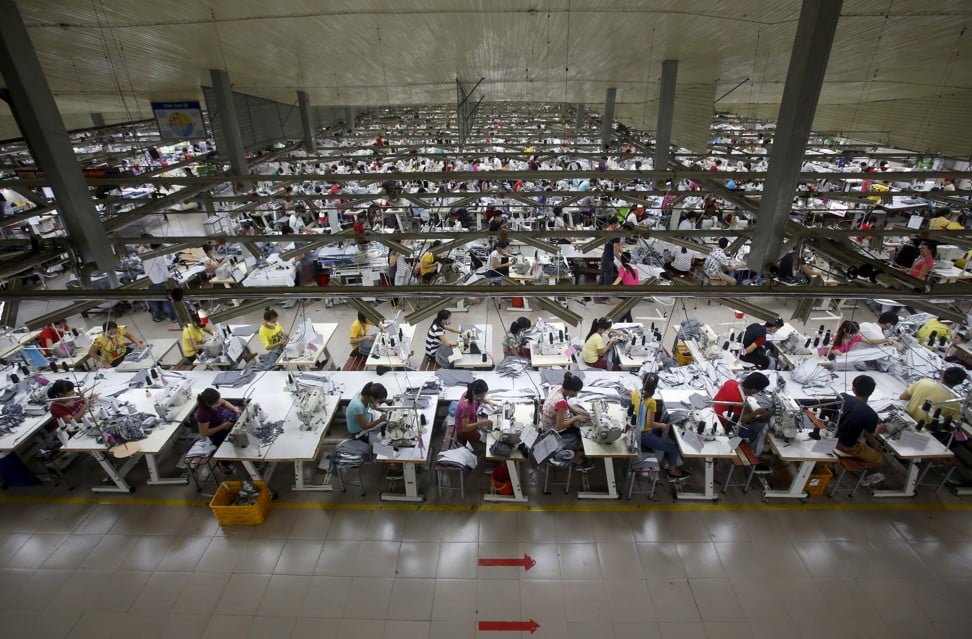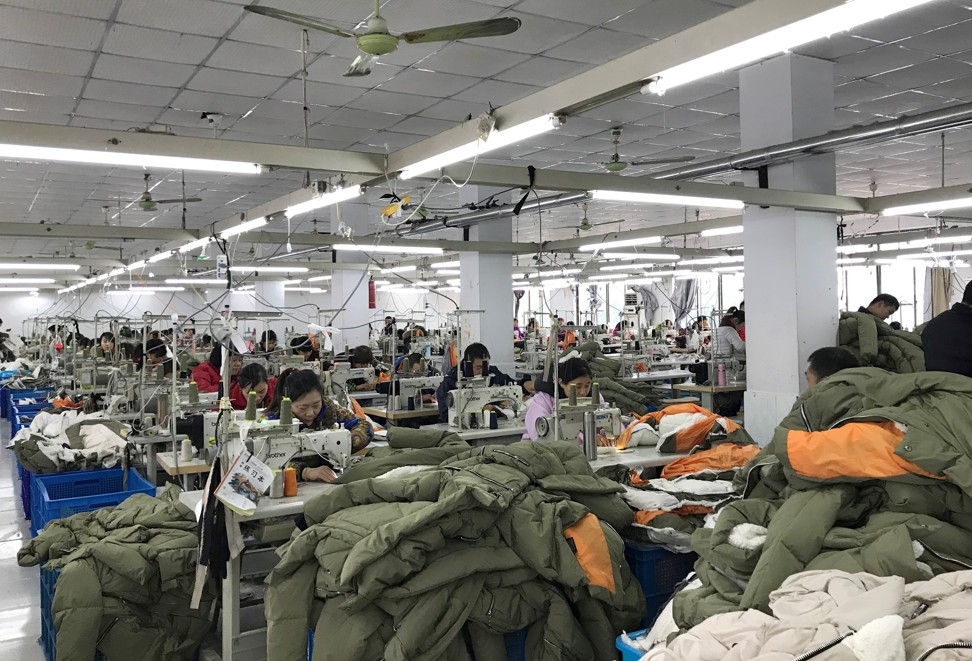
Vietnam to China and back: How one illegal factory worker embodies the trade war manufacturing exodus
- Seeking a better life for himself and his new wife, Manh travelled over 800km to work in a lingerie factory in Dongguan despite not speaking Mandarin
- Six years later and with the manufacturing landscape changing, he is back in Vietnam working as a Mandarin-speaking shift supervisor for a Chinese company
Six years ago, when thoughts of a trade war with the United States were non-existent and with China’s manufacturing sector booming, 27-year old Vietnamese worker Manh crossed the border into the neighbouring country seeking to earn enough money to eventually build a house for his new wife back in Vietnam.
Despite not speaking a word of Mandarin, Manh boarded a bus in Mong Cai, a city on Vietnam’s border with China, bound for Guangxi, an autonomous region in southern China around 260km north.
After arriving in Guangxi, Manh met a Chinese gang smuggling people around China and was taken on another bus for 10 hours and over 600km to Dongguan, China’s manufacturing powerhouse in Guangdong Province, containing thousands of export-oriented factories. The “referral” from the gang cost Manh 800 yuan (US$116), but he settled in at the small lingerie factory for the next three years.
In 2013, the average monthly wage in the manufacturing industry in Dongguan was around 3,000 yuan (US$437), according to Dongguan-based human resource training company Chtone. In Vietnam, Manh could have expected to earn about a third of that, based on data from the General Statistics Office of Vietnam.
I love money, and I want to earn as much as I can
“I love money, and I want to earn as much as I can,” Manh told the South China Morning Post at the factory in Bac Giang province in Vietnam where he currently works as a shift supervisor.
Life in Dongguan was not easy, but Manh was able to earn at least 6,000 yuan (US$873) per month, working 12 hours a day for six days a week, earning 1 yuan for every bra he made. But like the other Vietnamese workers in the factory, Manh did not get paid overtime rates for working weekends or public holidays.
This type of illegal employment, where manufacturers also did not need to provide medical insurance or pay pension contributions, helped the factories make a healthy profit. Vietnamese workers in Manh’s factory also had to work for free during their first two months.
“The factory provided us with accommodation, which was good, but they put different couples in one room to save the cost, which was inconvenient for us,” added Manh, who has not been fully named to protect his identity.
Manh, who possessed a high school diploma, gradually learned to speak Mandarin from his colleagues and could even type simple Chinese characters. They would often go out after work to barbecue stalls in the street and talked over beer. Soon, it was hard to tell which member of the group was from Vietnam, so proficient had Manh’s Mandarin become. “The thing I miss the most about China is the barbecue,” Manh said.
As an illegal worker, though, Manh was at risk of being stopped by the police, especially during the day, and he was detained on several occasions for not having the correct paperwork.
“The police confiscated all the items you had, especially cash. We told the police that we were here to earn money and the police would say ‘you cannot work here’. They usually detained us for around one month then released us. We just sneaked back to the factory afterwards,” recalled Manh. “If you gave the police money, they would treat you relatively better.”
China does not release official data on illegal foreign workers, but the China Daily reported that Dongguan investigated cases involving 400 foreign illegal workers in 2013 and more than 800 in 2014.
The Guangzhou Daily reported that more than 5,000 illegal foreign workers in Guangdong Province in 2014 were investigated. The authorities did not reveal how many of the illegal workers were from Vietnam, but said “most were born in the 1980s and 1990s and came mainly from neighbouring southeast Asian nations”.
Employers face fines of between 10,000 yuan (US$1,455) and 100,000 yuan for recruiting an illegal foreign worker, according to Chinese law, although some manufacturers feel there is a low risk of being caught.

In an interview with Guangzhou-based Nanfang Daily, Guangdong police admitted that it was “difficult to effectively stop the influx of illegal workers into China” due to “limited resources to handle it through cumbersome diplomatic procedures”.
Not long after, Manh’s wife was lured by the prospect of a higher salary and so sneaked into Dongguan via the same route to start work in factory, but soon became pregnant and returned to Vietnam.
And at the end of 2015, Manh also returned home. “I was getting old, and it was time to be with the family,” he said.
In less than three years, the couple managed to save around 200 million Vietnamese Dong (US$8,500) which allowed them to buy a plot of land.

And as the tit-for-tat US-China trade war continues, the Chinese factory that Manh works for is receiving more orders from manufacturers in China, with these products then exported from Vietnam to US to avoid the increased tariffs.
“Managing Chinese and Vietnamese workers is different, so we promote those Chinese-speaking Vietnamese to manage local workers,” the factory manager said.
As a team leader, Manh now earns around 6,000 yuan (US$873) per month, which is three times the salary of a production line worker at the same factory.
“We need to work hard to make our dream come true,” said Manh, who now has three children aged one, three and five.

